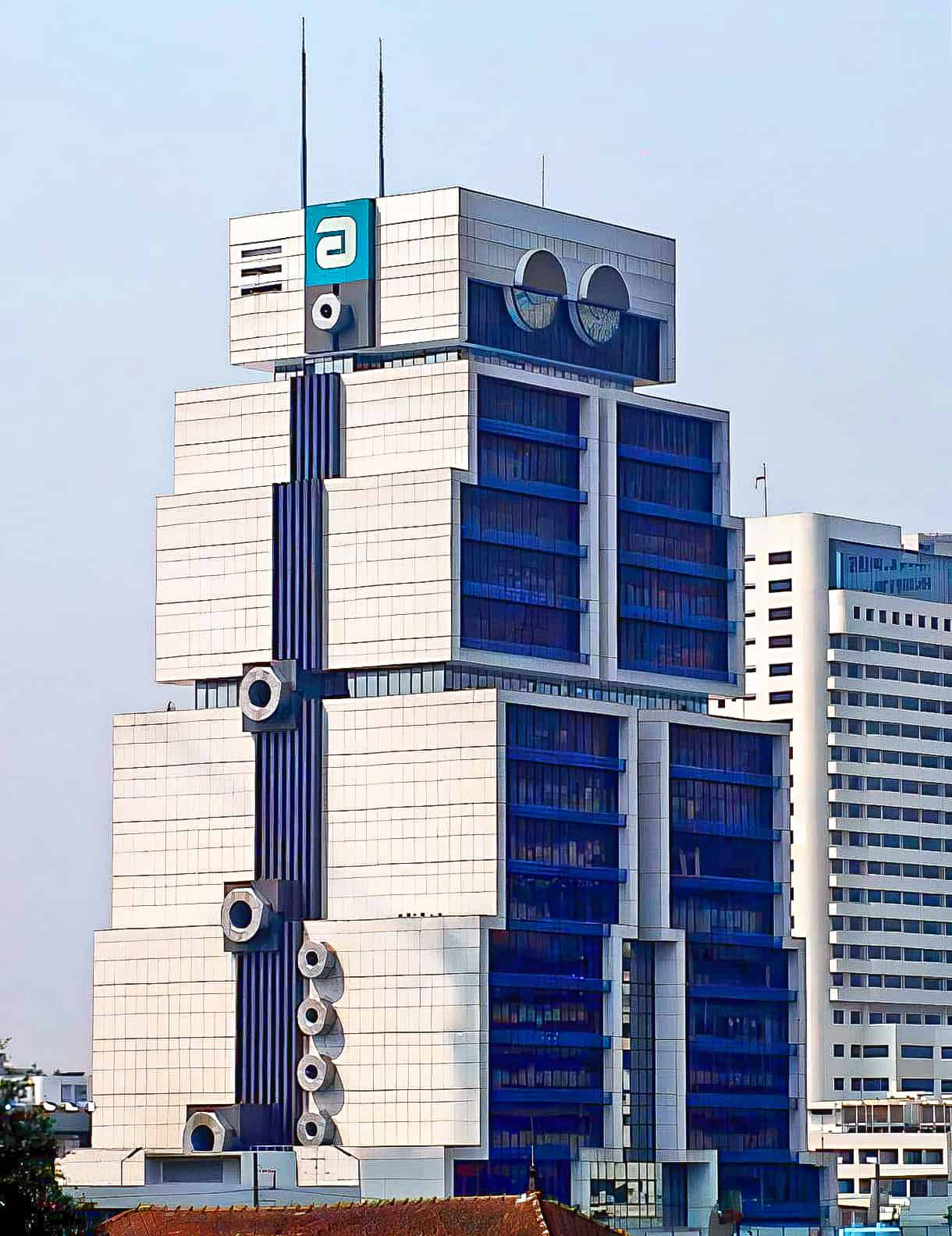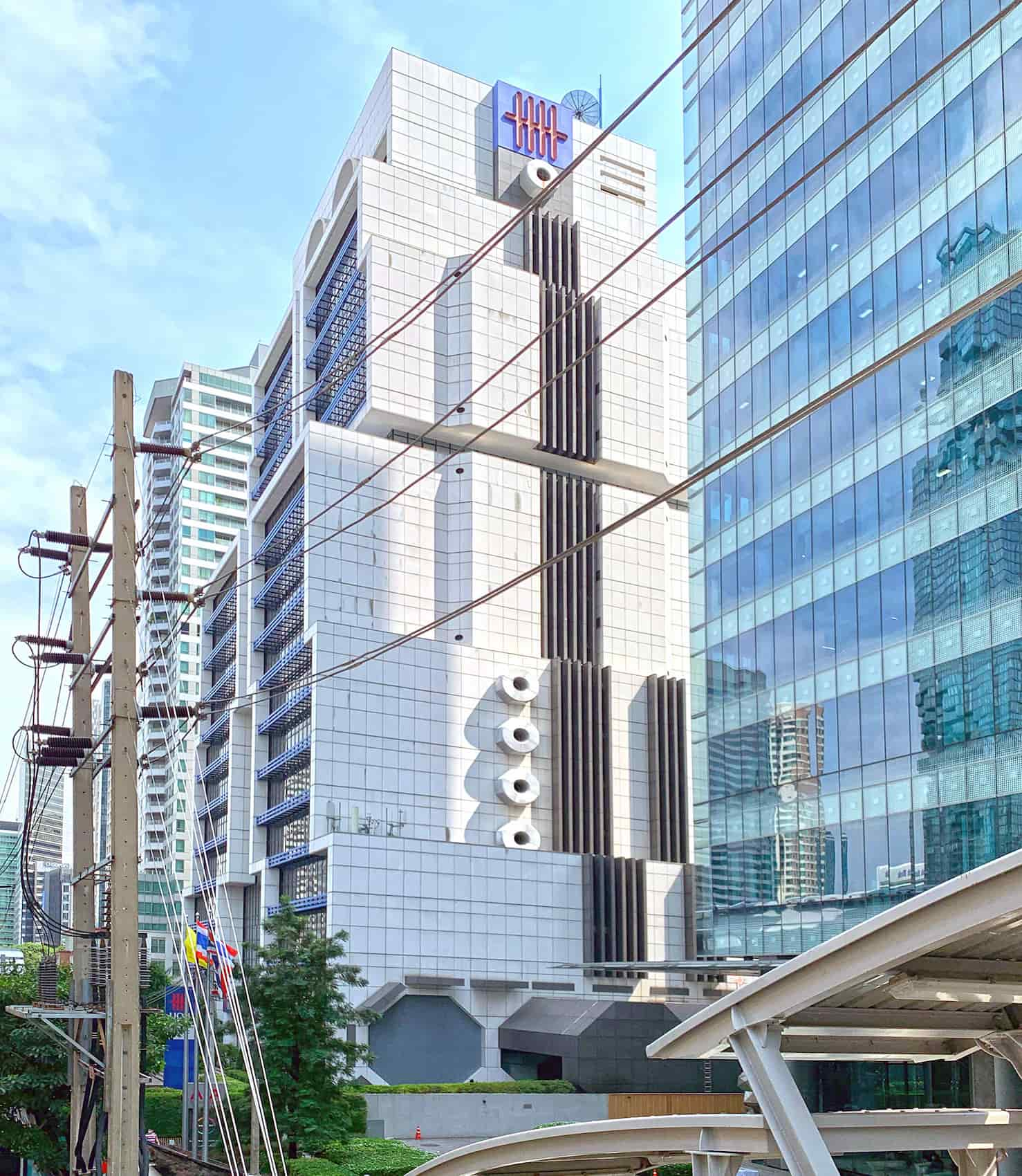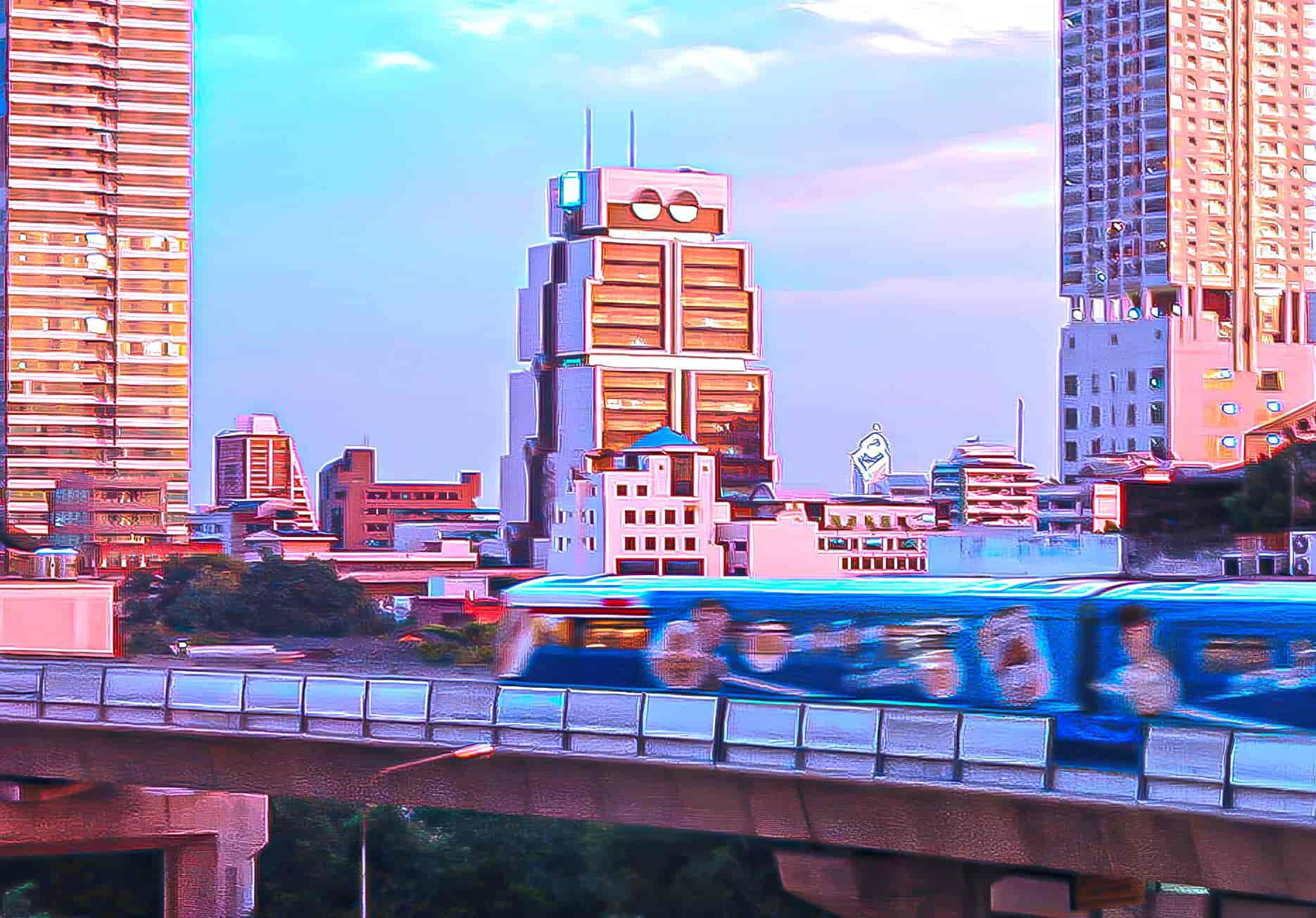- The Robot Building in Bangkok is a 37-year-old landmark.
- Construction cost exceeded 300 million Thai Baht in 1986.
- Its unique design features receding walls and giant concrete nuts.
The Robot Building in Bangkok, Thailand, is a famous landmark created by the national artist in architecture Dr. Sumet Jumsai na Ayudhya. This landmark structure has been visible to passersby for 37 years. In 1986, Sumet Jumsai finished overseeing the completion of this spectacular office complex known as the Robot Building. In its day, it was praised as a groundbreaking example of modern architecture.
Features of the Robot Building

Bangkok’s economic climate shifted in the 1980s as the city modernized its banking sector and embraced the rise of the computer. Sumet Jumsai, when tasked by the board of the Bank of Asia to design a building to depict this transformation, looked to his son’s toy robot for ideas.
He struggled to come up with a suitable design until his son brought a toy robot to his office, sparking the idea for the building’s unique design.
The concept for the Robot Building was conceived in September 1983; construction started in September 1984; and the building was dedicated in September 1986. Over 300 million Thai Baht (around $10 million) was spent on construction, a huge figure at the time.
The building supports receding walls, antennas, and two eyes.
The gross floor space of this twenty-story structure is around 253,000 ft², and its parking garage, which spans eight floors, has a gross floor area of around 115,000 ft² and can hold more than 340 vehicles.
The 4th, 8th, 12th, 16th, and 18th levels all have different layouts because of the robot’s unique design. The Robot Building has various giant nuts around its body, and the biggest nut measures a whopping 12.5 feet in diameter, making the gigantic concrete nuts that flank this building its most noticeable external feature.

Some Smart Design Elements
The structure is mostly enclosed on the east and west with minimal openings since that’s where the nuts are placed. During the day, this layout decreases cooling energy needs.
The Robot Building was designed for the Bank of Asia in the first place, and the company is represented by the light blue tinted glass that makes up the northern and southern walls of the structure (the front and back of the building, respectively).
A children’s toy inspired the architect to create a building of unusual shape.
An executive boardroom with a panoramic view of Bangkok’s skyline can be found at the back of the building. The building’s top level, which looks like the robot’s head, is where the executive dining room and main conference room are located. The Robot Building supports some antennas, and both of them are 55 feet in length, and its two robotic eyes are 20 feet in diameter. These eyes are composed of reflecting glass and have iron eyelids.
The building’s floors gradually decrease in size, creating the appearance of a “robot’s body.” Two round windows at the top resemble half-closed eyes, giving the robot a slightly sleepy look.
One of the Century’s Top 50 Landmark Buildings
The Robot Building was widely covered in the media on a global scale due to its modern but retro-like design. According to LA’s Museum of Contemporary Art, it was one of the century’s top 50 landmark structures.
The building’s “post-high-tech” aesthetic was a response to the Post-Modern movement, and its use of mechanical elements (the receding walls, antennas, and eyes) was meant to represent the harmonious relationship between humans and machines.
The Bank of Asia was later acquired by the United Overseas Bank (UOB), but the Robot Building is no longer the primary location for UOB operations in Thailand. At the close of 2022, the bank shifted its operations to UOB Plaza in the Pom Prap Sattru Phai District of Bangkok. The Robot Building is now operating as a satellite office while undergoing outside repairs that are authorized between March 1 and August 1, 2024.
The Robot Building is still highly renowned in the country; it represents the aesthetic and practical capabilities of contemporary Thai architecture. It has always been a symbol of Thai pride since it exemplifies the country’s distinctive and bold approach to building design. Another example of this is the Elephant Building, the largest elephant-shaped building in the world.
A Rotating Head and Robot Servants
Dr. Sumet, the architect of the building, initially proposed a building with much more impressive features. The first concept called for the construction of two robot servants, whose movements could be directed from a control room to guide customers inside the building, according to the ASA Journal of the Association of Siamese Architects.
The engineering professors from King Mongkut’s Institute of Technology Ladkrabang were consulted on the final design and implementation of this concept. However, it was predicted that making one would cost over 300,000 baht, which was a lot of money back then.
Since there was already a restaurant with a rotating feature, it was also suggested to have the Robot Building’s head revolve back and forth. About an extra million Thai Baht in building costs would have been needed for this. Unfortunately, the project owner said no to this plan as well.
As the biggest robot-shaped structure in the world, Guinness World Records has indicated interest in adding the Robot Building to their records, making the thought of rotating the building’s head all the more disappointing. However, the Robot Building couldn’t be included in the records due to the “lack of movable parts.”
The Fate of the Robot Building
Renovations
The years have made the building seem dwarfed next to the current skyscrapers. The renovations now taking place at the Robot Building have garnered a lot of media attention recently, prompting some to wonder whether this landmark structure, which has stood for almost 40 years as Thailand’s cultural heritage, would meet the same fate as so many others from its age.
This is because there has been ongoing work to reduce the energy consumption of the structure, which has altered the original facade of the building significantly. As renovations continue, the building’s iconic eyes will disappear, and some of the building’s textured surfaces will be replaced with all-glass exteriors, which can remove the original appearance of the Robot Building.
Efforts to Protect It
In an open letter to United Overseas Bank (UOB) Thailand, heritage campaigners expressed their concern about the proposed exterior changes. They claim that the Robot Building marks the era of late modernism giving way to post-modernism and hence is historically significant.
They advocate for modifying the renovation plans so that the building may retain its historic integrity and status as an internationally significant structure. They also highlight the possible advantages of transferring development rights or designating the Robot Building as a historic structure within the larger Bangkok city plan.
Given that the past era’s architectural modernity keeps fading, the developments around the Robot Building will be interesting to observe.
The buildings from the 1940s through the 1970s represented a new age in construction. However, these once-proud examples of twentieth-century architecture have fallen into disrepair as a result of their inability to compete with the rising costs of land on which they were built.
The Robot Building is accessible by taking the BTS Skytrain to Surasak Station and walking for about 10 minutes.
References
- Featured Image: Diliff, Attribution-Share Alike 3.0 Unported, cropped and edited.


